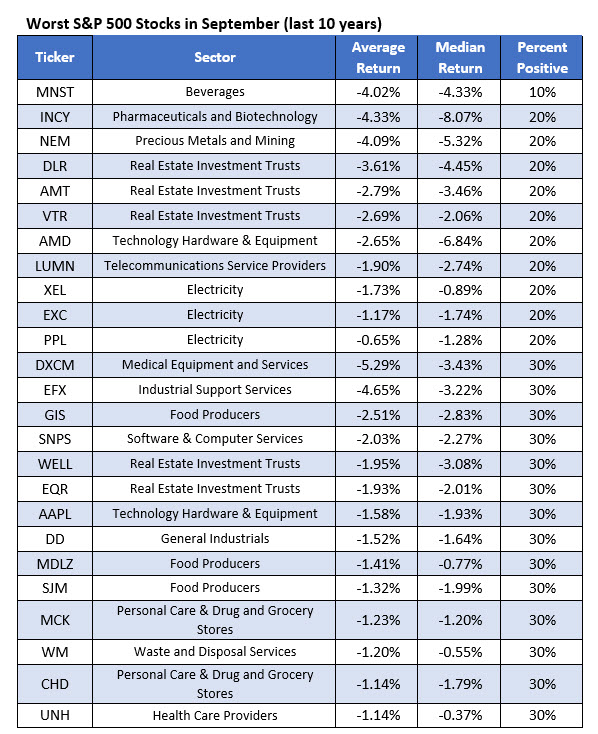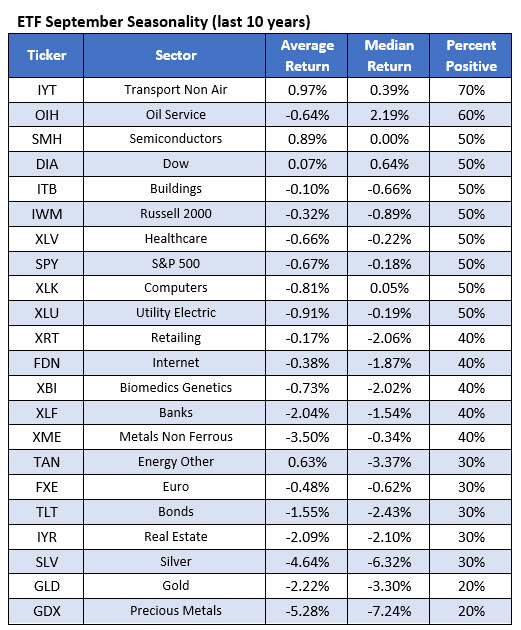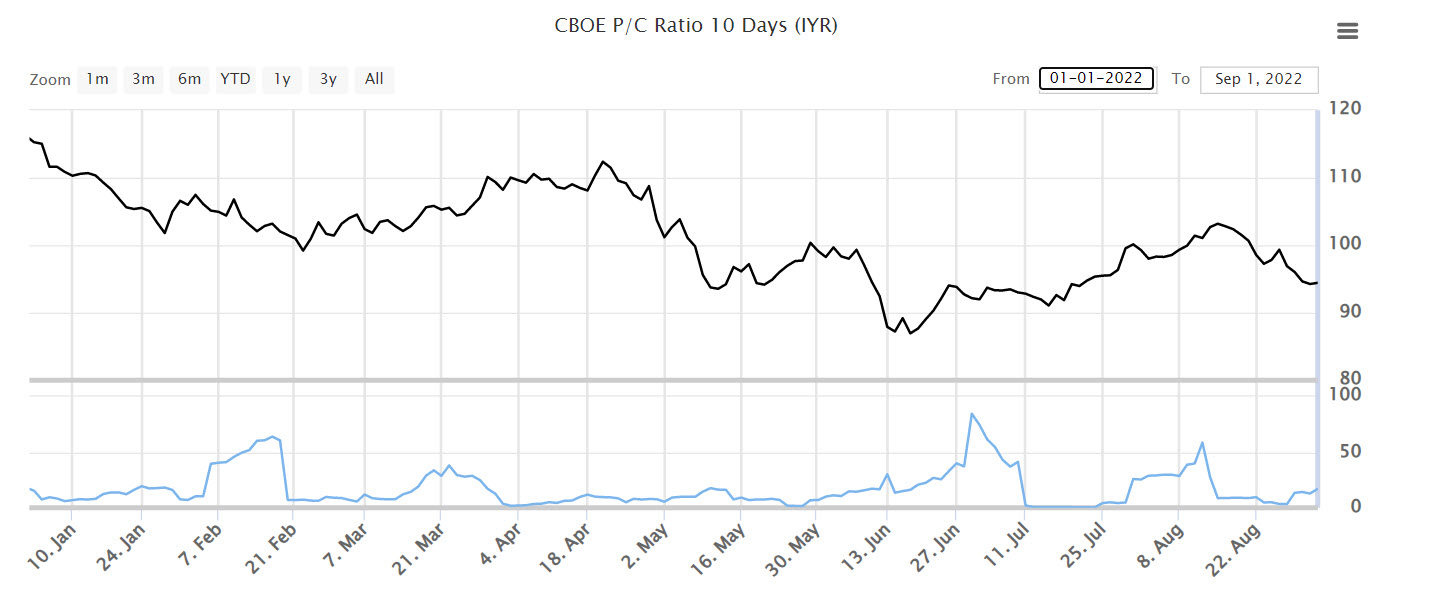REIT’s tend to struggle in September, historically
Subscribers to Chart of the Week received this commentary on Sunday, September 4.
Last Wednesday, S&P Case-Shiller data showed home prices cooled off in June but were still 18% higher year-over-year. May’s data showed a 19.9% year-over-year gain, so perhaps this red-hot housing market is finally ready to take a breather. It’s well known that September is a historically bearish period for stocks. On top of that broad-market seasonality, real estate investment trusts (REITs) tend to struggle this month as well.
At the start of every month, Schaeffer’s Senior Quantitative Analyst Rocky White compiles the 25 best and worst stocks on the S&P 500 Index (SPX), historically, in the last 10 years. White’s ‘Worst Of’ list for September stands out for the five REIT’s that typically underperform this month. That’s the most of any sector by far, per the table below.

Digital Realty Trust, Inc (NYSE:DLR) has averaged a loss of 3.6% in September in the last decade, with a 20%-win rate. American Tower Corp (NYSE:AMT) and Ventas Inc (NYSE:VTR) have posted average losses of 2.8% and 2.7%, respectively, with the same meager win rate of 20%. Equity Residential (NYSE:EQR), one of the better-known REIT’s, checks in with a -1.9% average return and 30%-win rate. It’s similarly bleak for exchange traded funds (ETF’s). Per White’s data, the iShares U.S. Real Estate ETF (IYR) averaged a 2.1% loss in the last 10 years with a 30%-win rate – marking a return that’s fifth worst among the ETF’s tracked.

This begs the question: are there macro occurrences out there that send the real estate sector grinding to a halt in September? Seasonality certainly affects the market. In addition to the rather obvious weather factor, the start of the school year and holidays are typically subsets that impact real estate. Per Attom Data, “typically, parents don’t move their family across the country in the middle of the school year. They wait until it’s over because they have more free time, and their kids can start their new school year right on schedule. This seasonal condition impacts when families will most likely be looking to buy or sell and can make for some of the best and worst months to sell a house.”
Holidays such as Labor Day also play a part; “very few people want to buy or sell homes during the holiday season. This explains why the period between November and January slows down when it comes to supply and demand of the housing market.” While that November through January period is widely regarded as a dead zone for real estate, a holiday weekend crammed into the start of the school year is certainly enough for most buyers to cool on the real estate market.
Are options traders ahead of the curve? At the International Securities Exchange (ISE), Chicago Board Options Exchange (CBOE), and NASDAQ OMX PHLX (PHLX), IYR sports a 10-day put/call volume ratio of 17.00. On Thursday, this ratio was 12, and per the chart below, has been trending higher through August. At last check, IYR was down 19.4% in 2022, and has turned in 10 losses in the last 13 trading days. The chart below also shows the ETF running headfirst into its 200-day moving average last month.
The real estate ETF is fresh off a 5.9% loss in August. Only two months have yielded positive returns for IYF in 2022; July and March. And sure enough, real estate was sounding a bullish seasonal alarm back in March, even in the face of geopolitical and central bank headwinds. While an investor should never rely on seasonality as their sole trading thesis, when the numbers skew so far in one direction, it’s worth looking into.

Image and article originally from www.schaeffersresearch.com. Read the original article here.

